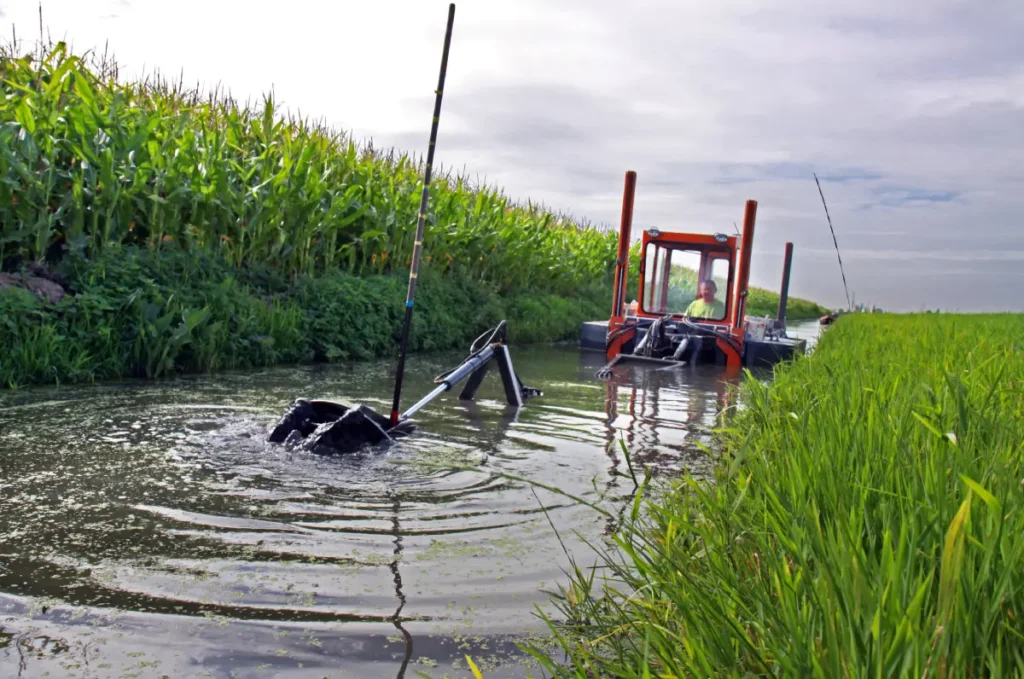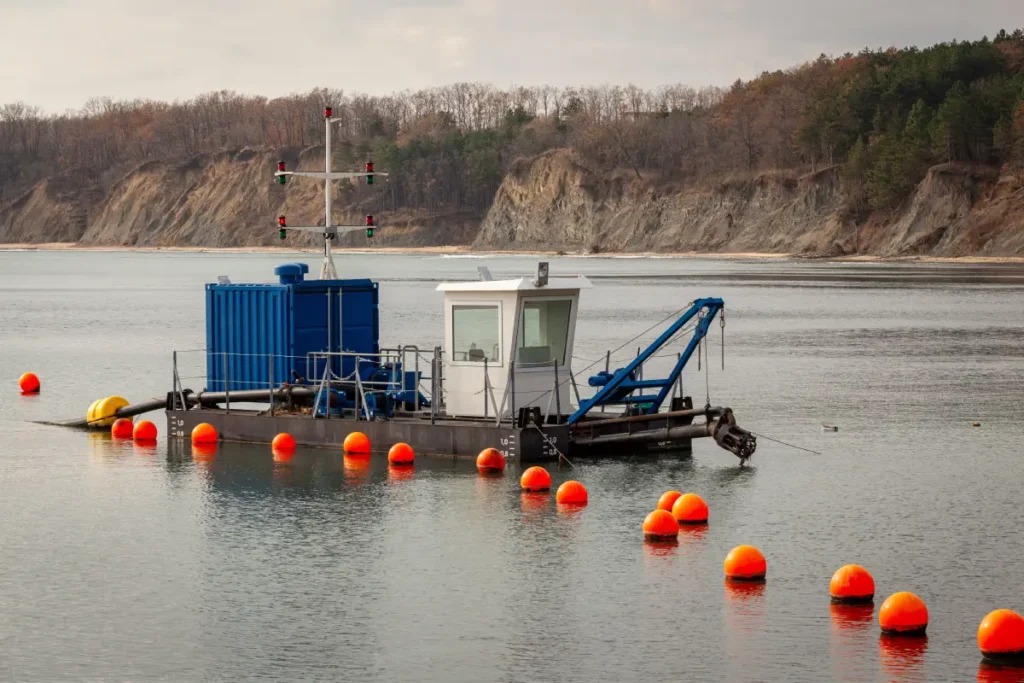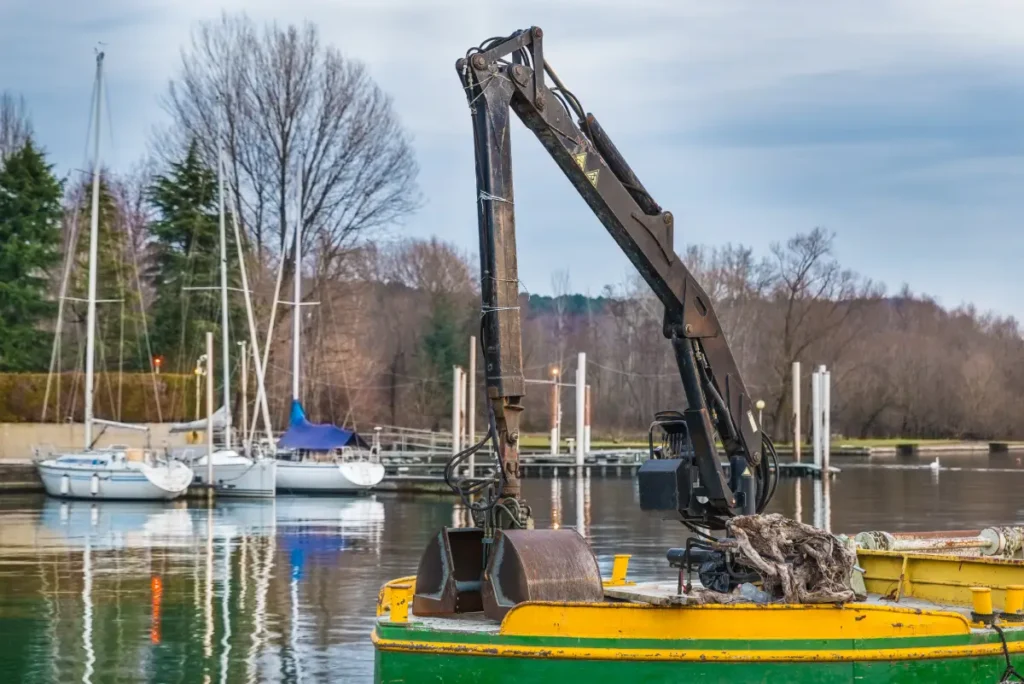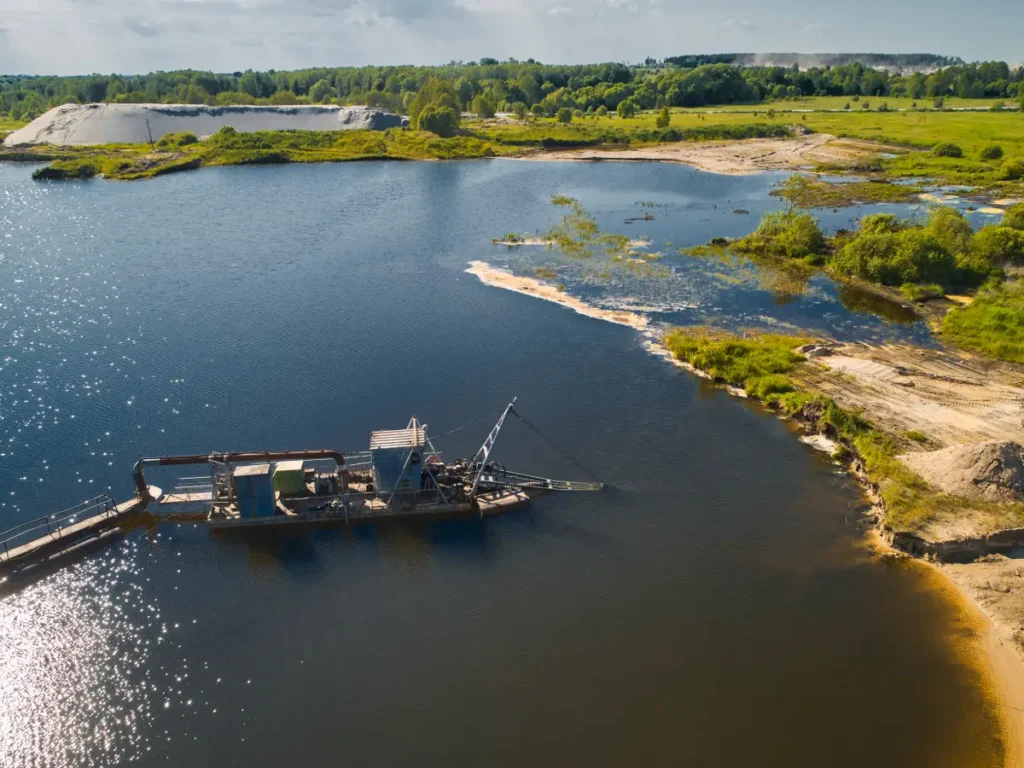Introduction
Small dredging equipment is redefining how industries tackle the persistent problem of sediment buildup, especially in sites where space is limited, access is difficult, or downtime isn’t an option. In a municipal wastewater plant, for instance, these compact dredges can desludge treatment lagoons without draining them, keeping operations running while restoring capacity. At a mining site, they can reclaim tailings ponds clogged with fine slurry, reducing the need for costly excavation or full-scale dredging. Even in industrial cooling ponds or stormwater basins, small dredging units excel at removing accumulated silt with surgical precision, minimizing turbidity and protecting downstream systems.
Inefficient dredging compounds challenges by increasing fuel consumption, labor costs, and equipment wear. Traditional large-scale dredging systems are often impractical for localized or recurring sediment removal, especially when access is limited or when smaller volumes need to be managed more frequently. The result is a mismatch between project scale and operational expenditure, raising overall costs without delivering proportional efficiency gains.
This is where small dredging equipment offers a distinct advantage. Compact, portable, and precise, these systems are designed for targeted sediment removal in ponds, canals, and industrial lagoons. They are also ideal for specialized applications, such as gold dredging equipment in smaller mining operations or small-pond dredging projects, where accessibility and cost efficiency are critical. By minimizing setup time, reducing fuel requirements, and allowing single-operator control, compact dredging equipment delivers measurable ROI through reduced project costs, faster turnaround, and sustained operational reliability.
Understanding Small Dredging Equipment
Small dredging equipment includes tiny, portable, and modular dredging technologies designed for precise silt removal in limited or shallow areas. These systems are generally trailer- or skid-mounted, portable, and designed for quick assembly and deployment. Unlike traditional large dredgers, which require considerable setup, expensive equipment, and large working teams, compact systems prioritize flexibility and cost-effectiveness, making them perfect for targeted sediment removal on industrial, municipal, and environmental projects.
In terms of capital cost, small dredging equipment requires a significantly lesser investment. Large cutter-suction or hopper dredgers can have multimillion-dollar budgets, specific crew training, and substantial operational costs. Small portable dredges, on the other hand, can deliver efficient results at lower cost, especially for confined jobs such as small-pond dredging or environmental maintenance in restricted areas.
Another important distinguishing feature is the operating range. While big dredgers are designed for deepwater and high-volume sediment extraction, compact systems thrive in shallow applications, often at depths of 1 to 10 meters, where accuracy and controlled slurry discharge are essential. For instance, gold dredging equipment in alluvial mining relies on mobility and maneuverability to recover fine materials efficiently without extensive site disturbance. Similarly, small-pond dredging operations benefit from lightweight systems that can be easily relocated between ponds, lakes, and reservoirs.
Maintenance and transport logistics further underscore the operational advantages. Large dredging fleets require dedicated transport vessels, cranes, and maintenance docks, resulting in longer downtimes and higher service costs. Small dredging equipment, by comparison, uses standardized components, simplified hydraulic systems, and modular designs that allow on-site servicing and fast redeployment.
These advantages make small dredges highly relevant across multiple sectors. In mining, compact and gold dredging equipment units optimize tailings recovery and sediment control. In the oil and gas industry, they maintain process ponds and keep onshore treatment systems clear. Their versatility helps water utilities and municipalities manage rainwater, maintain canals, and restore the environment, all while keeping operational budgets and logistical complexity in check.

The Economics of Sediment Removal
Several site-specific variables drive dredging costs. Sediment type is primary: clean sand or silt is relatively inexpensive to remove, while dense clay, consolidated materials, or contaminated sediments significantly raise handling and disposal costs. Access can affect logistics; remote sites, restricted channels, or urban settings can increase mobilization time and necessitate specialized transit or temporary labor. Disposal choices and legal limits (for example, hazardous classification, dewatering, or containment requirements) can increase prices per cubic metre. Finally, project scale is important: bigger, continuous-volume contracts may support expensive, high-capacity dredgers, but smaller, intermittent projects cannot. Industry benchmarks show that projects can cost between $5 and $200 per m³, depending on factors and local market conditions.
For localized tasks such as small-pond dredging or targeted maintenance in waterways, the economics favor compact units. Smaller sites reduce the need for long-distance slurry transport, large containment sites, or prolonged site establishment, all of which inflate per-m³ costs with larger dredging campaigns. Using industry averages, substituting a high-capacity dredger for a small, portable unit on low-volume jobs can reduce unit costs substantially because fixed mobilization and setup charges are spread over far fewer cubic metres when large equipment is used.
Compact systems reduce costs across three primary areas. First, mobilization and setup expenses are reduced: trailer-mounted or modular units may be supplied using light trucks, installed without big cranes, and commissioned in hours rather than days. Second, fuel and power consumption decrease, smaller pumps and engines use less energy to do equal local removal duties, and many new compact machines enable efficient hydraulic or electric drives. Third, crew needs decrease: single-operator or small-crew processes minimize labor costs while simplifying shift planning and safety management.
When seen via an ROI lens, the benefits are evident. Faster deployment and shorter project cycles result in faster restoration of operational capacity (reduced downtime) and cheaper administrative expenses. When total lifecycle costs are modelled, capital amortization, routine maintenance, fuel, crew, and disposal, small dredging equipment frequently delivers a lower cost-per-project for routine and small-scale jobs. In niche mining applications, purpose-built gold dredging equipment can also produce direct revenue by recovering pay-grade materials during sediment removal, further improving payback timelines compared with large-scale mobilizations. Likewise, repeatable small-pond dredging programs using compact units often show lower long-term TCO and greater scheduling flexibility than contracting large marine dredging firms.

Core Applications of Small Dredging Equipment
Small dredging equipment plays a vital role across a wide spectrum of industries where efficient, targeted sediment removal directly supports productivity, environmental compliance, and operational safety. Its adaptability makes it especially valuable in sites that demand precision dredging and minimal environmental disturbance.
In mining and resource recovery, compact systems are commonly deployed for tailings pond maintenance and fine material reclamation. Purpose-built gold dredging equipment is especially useful in small-scale or alluvial mining operations, where precise silt removal may boost recovery rates while lowering water consumption and waste disposal. These devices allow mining operators to maintain optimal pond capacity, lengthen facility life, and decrease the likelihood of unscheduled shutdowns.
In industrial waterways, small dredging equipment ensures consistent flow at plant inlets and outlets, preventing sediment accumulation that can strain pumps, reduce energy efficiency, or cause production bottlenecks. Their portability enables facilities to undertake repairs on demand, without relying on huge contractors or extensive site preparation.
In municipal and environmental projects, compact dredging units are indispensable for managing stormwater ponds, canals, and flood-control systems. Their low-turbidity functioning contributes to the preservation of aquatic ecosystems while also enhancing drainage and water storage capacity, both of which are critical for urban resilience and environmental compliance.
Within oil, gas, and marine infrastructure, small dredging equipment is often used for port sediment control, tank farm water treatment ponds, and oil spill residue removal. Its precision and modularity make it suitable for restricted zones where larger dredges cannot operate safely or economically.
Finally, small pond dredging applications, such as estate lakes, agricultural reservoirs, and recreational water bodies, benefit from the same core advantages: quick mobilization, minimal site disturbance, and cost-effective operation. Across all these environments, the precision, versatility, and efficiency of small dredging equipment enable operators to achieve reliable sediment management even in confined or environmentally sensitive locations.

Beneficial Use Dredging: Turning Waste into Value
Beneficial use dredging focuses on transforming dredged sediment from a waste by-product into a valuable resource for environmental and commercial applications. Rather than merely disposing of removed materials, enterprises are increasingly recycling sediments to promote sustainable development and ecological restoration. This strategy not only minimizes disposal costs but also improves environmental outcomes and aligns with broader ESG and circular-economy goals.
Beach nourishment, which uses dredged sand to restore eroded coastlines and protect coastal infrastructure; wetland creation and habitat restoration, which use organic-rich sediments to rebuild natural ecosystems and improve biodiversity; and land reclamation and industrial use, where processed dredged material can be used as structural fill or construction aggregate. These projects show how sediment management may transition from a maintenance requirement to a source of environmental and economic value.
The precision and control offered by small dredging equipment make it particularly well-suited for beneficial use projects. In confined or sensitive environments, compact systems can target specific sediment layers with minimal turbidity and contamination risk. This ensures that only clean, reusable material is extracted, reducing downstream treatment and handling requirements. For instance, gold dredging equipment used in alluvial mining demonstrates how fine sediment separation can recover valuable minerals while maintaining low ecological impact, a principle that transfers effectively to environmental dredging as well.
Because small dredging equipment is modular and portable, it can be deployed across multiple sites where large dredges would be impractical. In small pond dredging and restoration projects, this adaptability allows for the selective removal of nutrient-rich sediments, improving water quality while preserving surrounding habitats. The reduced footprint and energy efficiency of small dredging equipment further support sustainability and compliance with modern ESG standards, helping organizations meet environmental goals without compromising operational performance. Whether reclaiming coastal land or restoring wetlands, compact dredging systems enable targeted, responsible material recovery that aligns with long-term ecological and commercial objectives.
Operational Advantages and Performance Insights
Modern small dredging equipment is designed to deliver exceptional performance through smart engineering and adaptable functionality. Its mobility and modular design make it ideal for applications that require rapid deployment and agility. These tiny devices can be moved on light trucks, erected rapidly, and used in confined or shallow areas where large dredgers are impractical. This flexibility allows industries to execute maintenance, reclamation, and environmental restoration projects with minimal disruption. Whether used for industrial ponds, canals, or small pond dredging, the modular design of small dredging equipment reduces setup time, lowers costs, and supports repeatable operations across multiple locations.
Today’s small dredging equipment also integrates remote or automated operation, enabling precise dredging control through intelligent onboard systems. Real-time monitoring interfaces or wireless control systems enable operators to adjust depth, flow, and pump output, reducing the need for manual intervention and enhancing safety in hazardous areas. Automation ensures consistent productivity across long dredge cycles, particularly beneficial for repetitive maintenance tasks or targeted operations such as gold dredging equipment in alluvial mining applications, where continuous, controlled sediment removal is key to optimizing recovery.
Energy efficiency is central to modern design. Small dredging equipment now commonly features advanced hydraulic and electric drive systems, optimized for performance and lower emissions. Electric drives provide quiet, clean operation for environmentally sensitive areas, while hydraulic systems maintain powerful suction for denser sediments. This focus on energy efficiency reduces operational costs and supports sustainable project execution, especially in routine applications such as small pond dredging or industrial sediment maintenance.
Another key performance attribute is low turbidity and precision sediment control. Unlike traditional dredging methods that disturb surrounding ecosystems, small dredging equipment uses controlled suction and flow systems that minimize water clouding and sediment resuspension. This precision makes it invaluable for environmentally regulated sites and supports high-quality outcomes in gold dredging equipment operations where separation accuracy directly affects recovery rates.
In measurable terms, small dredging equipment consistently delivers superior real-world performance metrics. Operators benefit from decreased downtime owing to easier setup and rapid deployment, predictable maintenance enabled by modular construction and easily accessible components, and faster project turnaround, as compact dredges accomplish smaller-scale projects efficiently and cost-effectively. These systems have been shown to be reliable in mining, municipal, and industrial operations, where continuous sediment removal directly influences performance continuity.
Modern technology has further advanced efficiency through the integration of monitoring and navigation systems. Small dredging equipment and gold dredging equipment now feature GPS-based positioning, sonar depth mapping, and automated cycle-optimization tools. These systems provide precise operational data, allowing real-time adjustments to dredge depth, pump rate, and slurry output. In small pond dredging, GPS integration ensures even sediment removal and accurate contour restoration, preventing over-dredging and improving long-term site stability.
By combining portability, automation, efficiency, and intelligent control, small dredging equipment has become a cornerstone of modern sediment management. Its ability to adapt to mining, industrial, and environmental contexts, including specialized applications such as gold dredging equipment recovery and small-pond dredging maintenance, demonstrates its unmatched value in delivering sustainable, performance-driven results.

Smarter Sediment Management for Industrial Progress
Small dredging equipment plays a strategic role in modern sediment management, delivering cost-efficient, sustainable, and high-performance results across industries. Its modular and portable design enables precision dredging in areas where large systems are impractical, reducing downtime and operational expenses. Whether maintaining process ponds, restoring waterways, or supporting mining operations, small dredging equipment offers a practical balance of efficiency, control, and environmental compliance.
From fine material recovery using gold dredging equipment in mineral extraction to targeted small pond dredging for water quality improvement, these compact systems maximize output while minimizing energy use and ecological disruption. Their versatility ensures dependable performance across industrial, municipal, and environmental projects—helping organizations achieve measurable ROI and sustainability targets.Engineered for demanding environments, PlusPumps provides durable, high-efficiency solutions built for long-term reliability. Its range of small dredging equipment supports diverse applications, including gold dredging, tailings reclamation, and small-pond dredging, offering consistent performance and low lifecycle costs.



